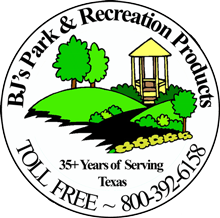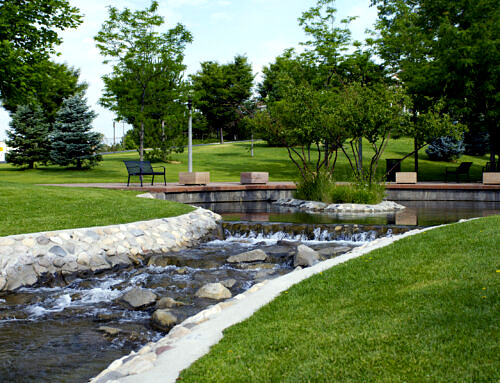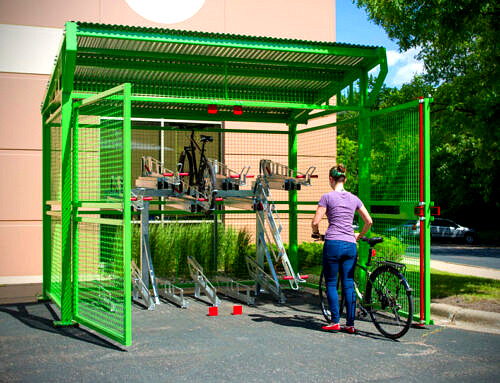Creating Safe Park Environments to Enhance Community Wellness
The Purpose of a Safe Park Environment

People seek out parks because they provide contact with the natural environment and a social setting which offers opportunities for meeting with friends, watching others, and being seen – all of which help to establish a feeling of comfort and security. Well-designed and well-used parks and recreation areas are a great asset for local communities. But that asset can quickly become a liability when parks become unsafe and, as a result, lose their value and benefit to the neighborhood. Keeping park and recreation facilities safe is a key to community wellness and has a direct relationship to their usage rate. Research by The Citizens’ Taskforce on the Use and Security of Central Park found that there was a direct relationship between the level of park use and the perception of security: the larger the number of visitors involved in positive activities, the more likely that anti-social behavior was deterred. The taskforce linked recreational programs with improved security by suggesting that an emphasis on expanded recreation initiatives will encourage greater use and ultimately create a safer park environment.
Creating a Safe Park Environment

Using the design and scheduled activities of a park helps address the issue of safety in parks and open spaces which is a complex task. The problem cannot be solved by design alone or by any one single activity. What is required to create and maintain safer park spaces is an integrative strategy involving design, programming, maintenance, and citizen involvement. The key finding in park safety research shows that there is a connection between park and recreation use and safety: where people use parks in a positive way and in substantial numbers, all people feel more secure. The factors that explain these findings emphasize the importance of greenery in improving community and personal wellness. Time spent in natural surroundings relieves mental fatigue, which in turn relieves inattentiveness, irritability, and impulsivity, recognized by psychologists as precursors to violence. Green spaces also support frequent, casual contact among neighbors.
Evaluating a Parks Safety

How is a park judged to be safe? Many look to crime statistics, but these can be misleading. Many crimes, particularly sexual assault, go unreported; and low crime statistics may, in fact, be influenced by people’s avoidance of areas they perceive to be high risk. Thus, when evaluating whether a space is safe or not, perceptions may be more important than crime statistics. Park managers frequently employ an audit in order to determine the relative safety of a given park or recreation area. The safety audit method was first developed in Canada by METRAC (Metro Action Committee on Public Violence Against Women and Children) and has been successfully used across North America to evaluate perceived risk in the urban environment. The safety audit process is based on participation and feedback from users of a given space. It allows for an evaluation of the physical environment in terms of fear of crime and perceptions of safety. When users become involved in identifying their safety concerns, they become an integral part of the solution. The findings from community-based safety audits are an important starting point for creating and implementing strategies for enhancing personal safety. Audits also provide an inventory of design, operational, and programming solutions to make parks safer.
Factors to Consider When Designing Safe Parks

The design of a park or recreation area can have a direct impact on people’s perceptions of safety and their willingness to use a space. Designing a park for safety is based on what is generally considered to be a good design for the specific location of the area. Criteria would include:
- Meeting the needs of its users
- Being diverse and interesting
- Connecting the people with the place
- Providing people with a positive image and experience
While a good design can create the preconditions for all of these things, it also needs to offer ease of element flow and diversity of interest for the youngest park-goers to the oldest. Knowing the local community’s needs is key to determining the layout of any park.
Factors to Consider When Creating Park Programs

Park activities and functions are a must to draw the public in. A good program schedule will include a diversity of activities and times to participate in them. Programs will also need to cater to young, old, and groups. They must include sports activities but can not rely only on these functions to support a steady use of the facility. Some things to consider when planning functions are:
- Locate activities near the park perimeter, beside an entrance, or along a main pedestrian path to help tempt passersby into the festivities
- Locate food concessions at the park edge that can serve both the street and the park also to help induce people into the park
- Make sure activities in the park include a human presence from early morning to evening for added ease of mind
- Develop activities beyond sports and playgrounds that encourage the use of the park day and night from a variety of participates
Getting local organizations and businesses to participate in planning functions for the park will not only increase diversity but will also include local commerce to have an investment in the park’s well-being. The more support the park gets from the local community, the more likely the park will be used and maintained by the community.
Factors to Consider When Maintaining the Park

Park maintenance is a vital part of keeping greenspaces appealing to potential users. If the park or its amenities look run down or in poor condition, people are apt to have a bad perception of the area and avoid going there. In order to keep a good outlook about the park in the community, the following should be considered:
- Regularly scheduled maintenance of lawn, landscaping, and trash removal
- Regularly scheduled inspection of all site amenities, drinking fountains, and playground equipment
- Regularly scheduled inspection of all sports fields, bleachers, and sports equipment
- Regularly scheduled inspection of all trails, walkways, and lighting
- Regularly scheduled inspection of all buildings, bathrooms, and storage facilities
- Available maintenance crew to fix and maintain issues as needed

Each of these scheduled inspections should have a sub-list of things to do. For example, a checklist for commercial site amenities would include:
- Bolts, fasteners, screws, and other parts that you see on picnic tables, for example, should be inspected on a regular basis and tighten or replace as needed
- Check for any missing hardware
- Damaged commercial site furnishings should be removed and placed in storage until the necessary repairs can be made
- Any parts that require lubrication should be done on a regular basis and according to specifications
- Any welds or joints that are cracked or broken need to be fixed
- Repair loose parts, seats, planks, armrests, legs, cross-pieces on picnic tables, braces, frames, etc.
- Fix cracked or chipped coatings or laminates
- For wood products such as wooden park benches or picnic tables, look for splintering and repair by sanding to a smooth touch or replacing
- Keep the products clean and free of dirt, grime, and grease to avoid slippage and a bad experience for users in general.
- A little bit of touch-up paint or thermoplastic coating can not only make a picnic table, bench, or bike rack look new but can also prevent further corrosion and chipping
- Some repairs can be completed by the facility maintenance crew or handy person while others may need a professional service technician or specialized tools

Obviously, to ensure the regularly scheduled inspection program is effective to keep your commercial site furnishings in tip-top shape the following criteria should be set in place:
- Create a schedule for inspection and maintenance
- Document the steps, who is accountable, and include a sign-off process
- Establish a detailed checklist for the commercial site furnishings that need to be cleaned and maintained including the parts and processes
- Date stamp all activity to help with warranty claims and other issues
- Instruct your staff to be on the lookout for any problems or signs of wear and tear
- Be especially vigilant for signs of vandalism as these things tend to happen overnight
- Remove any item that cannot be repaired or fixed immediately to maintain park safety and appearance
- Remove any commercial site furnishings immediately that has been damaged with offensive graffiti since parks are family places and no one wants to see their park defaced on social media

Inspect, fix, possibly remove, tighten and clean all commercial site furnishings now to avoid any messy maintenance problems later that require more of your time and resources to resolve. Maintaining park facilities not only ensures positive vibes from the community but also reduces the risk of injury from neglect or bad reviews from social media. A well-maintained park ensures everyone benefits by providing a natural environment to enjoy nature, community, and activities.
Factors to Consider for Community Involvement in the Park

Including the local community in the design, programming, and inspection of their park is a vital way to ensure the park will be a success. If the locals are on board with the layout and planning of events, they will be sure to utilize the park and invite their friends and families to come along as well. The more community involvement the more pride and care the neighborhood will take in their local greenspace. To help the community get involved consider:
- Advertising for a local park board to oversee and advise on park design and layout flow
- Ask the park board to help create activities and functions for the park
- Request local businesses to work with the park board to organize events in the park
- Ask the park board to oversee food and merchandise vendors in the park
- Ask the park board to help with maintenance scheduling and follow-through of inspections
The more the local community feels they have a say in their park the more they will be willing to utilize it and keep it safe for everyone to enjoy. We all want to feel safe in our own backyards and the local greenspace is no exception. Pride in the community will reflect pride in the park which will give the residence a sense of safety knowing the neighborhood is backing them.
Factors to Consider When Issues Arise

Designers, operations, recreation staff, and citizens all have a vital role to play in creating safer park environments. The key factors to consider when dealing with park safety issues are summarized below:
- Perceptions that a park is unsafe are as important as actual safety
- Involve users in the design or redesign of park spaces
- Clear and understandable signage helps enhance the feeling of safety because it allows people to orient themselves
- Formal/informal surveillance or the extent to which activities in parks can be observed by other people; is important for reducing vandalism, inappropriate activities, and feelings of isolation
- Lighting to enhance perceptions of safety, although this may not reduce actual crime rates
- Improved lighting and increased legitimate activities allow for greater nighttime surveillance
- Clear sightlines give the perception of actual safety because people can see what is ahead and around them and if other people are visible
- Physical access should be maximized by providing users with a choice of legible routes to and from park areas
- Good maintenance is crucial to maintain perceptions that areas are low risk.
- Vandalism can contribute to perceptions of fear because litter, graffiti, and broken furniture all suggest a place is uncared for and possibly unsafe
- Diversity can attract a higher intensity of use
- Variety in the form, color, and texture of landscape elements, as well as a range of activities, contributes to an interesting environment that attracts users
- Signage in the form of maps and descriptive text promotes a greater sense of safety because people feel safer when they know where they are and how to get to where they want to go
- Access to telephones and park staff can provide a greater sense of well-being and safety
- Citizen involvement fosters a sense of ownership and pride and builds a constituency of users with an interest in keeping parks safe
- Enforcement of rules concerning inappropriate activities need to be maintained to prevent a cycle of withdrawal and hence a reduction in the positive use

Prevention = Safety

Increasing numbers of people are expressing concern for their personal safety in urban, suburban, and even rural settings. this fear of violence and the perception that an environment is unsafe is, in effect, a barrier to many people’s use and enjoyment of public space. Our park and recreation systems are part of the glue that binds communities together. It is only through smart, well-thought-out planning and maintenance of parks that consumers can feel safe in utilizing these wonderful resources. The public’s need for gathering places is evident, now more than ever. The need to gather, share stories, celebrate, and enjoy nature in a common place is a basic, human, and universal right. We must continue to allow and encourage the diversity, culture, and commerce of all our communities to thrive in healthy, livable cities, markets, parks, and neighborhoods by ensuring a safe and pleasant experience at the local community park.







